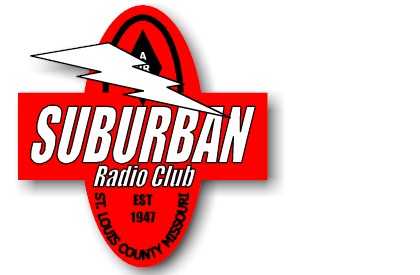 |
SRC Foxhunt |
The Suburban Radio Club will host a Fox
Hunt on Sunday, April 18th, 1999.
All are are invited club members and
non-members alike.
You don't even need an amateur license to be a hunter.
We will initially assemble in the parking lot
of our regular meeting location
Check in begin at 1:30 p.m., and the hunt will
officially start at 2:00 p.m.
Talk-in Frequency is the WØDCW 146.85 repeater.
Don't know anything about Fox Hunting? This is
a beginner's event. The presentation for the club meeting on
Friday April 9th will be an introduction to Fox Hunting. For more
details, see our home-page at www.qsl.net/src
Basic Rules Basic
Equipment Other Equipment
to Bring Hunt Boundaries Further
Information
Basic Rules
- The hunt begins in the parking lot of the
Goff-Moll American Legion Post in Brentwood.
- Check in is required. Synchronize watches
with the huntmaster.
- Each vehicle contains an independent team
or individual. No sharing of information between teams is
permitted.
- There will be two classes of participants:
Doppler and non-Doppler.
- The first hunter in each class to find the
fox is the winner.
- The fox will hide within the boundary area
and within 500 feet of access by passenger cars in a
publicly accessible area with no charge for admission.
- Net control on 146.850 repeater will give
announcements at 15 and 45 minutes after the hour. These
announcements may consist of clues and further
restrictions on the hunt boundaries or alternate hunt
frequencies in case of interference.
- The Fox will transmit every 10 minutes for
a variable duration: 30 to 60 seconds. Though he may
taunt you mercilessly, you are not to transmit on the
hunt frequency yourself.
- The hunt will end at 5:00 p.m.
Basic Equipment
- You will need a radio that tunes the fox
frequency. You may use a scanner. Although it is possible
to use a radio which does not have a signal-strength
meter "S-Meter", or other means of showing
relative signal strength, you will be disadvantaged if
your radio does not have at least an LCD bar-graph to
help you judge how strong the signal is.
- Second, you will need some kind of
directional antenna. This should be small enough to hand
carry. The intent is to give you some method of judging
the direction the signal is coming from.
- Third, you need an antenuator. An
attenuator knocks down the signal strength as you get
closer to the signal source. Without an attenuator, your
S-Meter will be pegged as you get closer to the
transmitter and you will be unable to determine the
signal direction.
- Next, you will need a protractor and a
really good map of the hunt area. A topographical may may
help you judge the potential for reflections or signal
dropouts. The protractor allows you to draw the bearing
on the map.
- A magnetic compass will be handy to help
you determine the bearing of the signal. You will need to
ascertain the magnetic declination for our area. However,
finding the angle between the fox and a known
transmitter, such as the 146.85 repeater may be
sufficient to record the bearing on your map.
Other
Equipment to Bring
- It has been known to rain in April. Bring
rain gear for yourself and some clear plastic bags for
your radio equipment
- Pencils, note paper, eraser.
- Snacks and drinks.
- Binoculars.
- Extra battery packs for your HT.
Hunt Boundaries
The initial hunt boundaries will be the area of
St. Louis County bounded to the south by I-64/US-40, the west by
the Missouri River, North by I-70 and to the East by I-170. Net
control may include clues and further restrictions on the hunt
boundaries during the periodic announcements.

Further
Information
Contact Mark, N7LRI or Jeff, AB0NR
on the 146.850 repeater or email: [email protected]
Maps courtesy of Yahoo!


